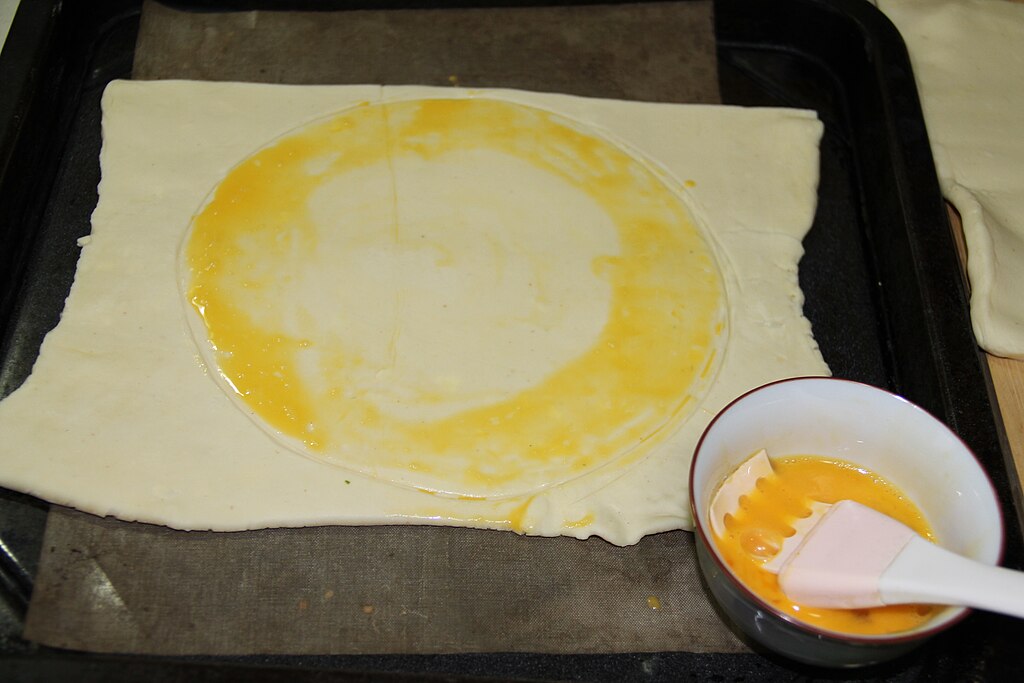Italian Desserts: Exploring Authentic Flavors and Sweet Indulgences
Italian desserts have earned worldwide renown for boasting exquisite flavors, delicate textures, and a rich cultural heritage. From creamy gelato to decadent tiramisu, Italian sweets have captivated the hearts and palates of dessert enthusiasts around the globe. In this article, we will embark on a delightful journey through the realm of Italian desserts, exploring the history, traditional recipes, and the sheer indulgence of these mouthwatering treats. So, grab a cup of espresso and join us as we delve into the irresistible world of Italian desserts.
Italian Desserts: A Heavenly Symphony of Flavors
Italian desserts encompass a wide range of delightful creations, each with its own distinct character and allure. Let’s take a closer look at some of the most beloved Italian desserts that have stood the test of time:
Tiramisu: Heavenly Italian Desserts
Tiramisu, often referred to as the “pick-me-up” dessert, is a classic Italian creation that combines layers of delicate ladyfingers soaked in espresso and rum, with a velvety mascarpone cream filling. The dessert is then generously dusted with cocoa powder, adding a bittersweet touch. Tiramisu’s harmonious blend of flavors and contrasting textures make it a true indulgence for any dessert lover.
Cannoli: Crispy Tubes of Sweetness
Originating from Sicily, cannoli are crisp pastry tubes that embrace a luscious ricotta cheese filling. These delectable delicacies often feature chopped pistachios, candied fruit, or chocolate chips, introducing an extra layer of crunch and flavor. The interplay between the crispy shell and the velvety, luxurious filling renders cannoli an irresistible delight.
Gelato: The Creamy Italian Pleasure
Gelato, Italy’s rendition of ice cream, is renowned for its velvety consistency and vibrant flavors. With a higher milk-to-cream ratio, gelato offers a denser and more sumptuous experience. Whether you indulge in a scoop of fragrant pistachio gelato or immerse yourself in the invigorating embrace of lemon sorbet, gelato effortlessly transports your taste buds to the sun-soaked streets of Italy.
Panna Cotta: Silky Elegance
The Italian term “Panna Cotta” translates to “cooked cream,” revealing a delicate dessert created by gently simmering cream, sugar, and vanilla, then setting it with gelatin. The outcome is a smooth, velvety custard-like delicacy that delicately melts in your mouth. Panna cotta is often accompanied by a drizzle of fruit coulis or a sprinkle of berries, adding a burst of freshness to its elegantly simple nature.
Biscotti: Crispy Almond Bites
The term “Biscotti,” meaning “twice-baked” in Italian, describes delectably crunchy almond biscuits. These elongated treats undergo a dual baking process to attain their signature texture. Biscotti are frequently relished when dipped in Vin Santo, a sweet dessert wine, or paired with a steaming cup of coffee. Their gratifying crunch and nutty undertones make them an irresistible companion for any occasion.
Torta della Nonna: Grandma’s Sweet Treasure
Torta della Nonna, translating to “Grandma’s Cake,” represents a cherished Italian dessert passed down through generations. This treasured confection consists of a buttery shortcrust pastry enfolding a lush cream composed of eggs, sugar, and a hint of citrus zest. The cake’s crown is adorned with pine nuts, contributing a delightful crunch and nutty essence. Baked to golden perfection, the torta della nonna stands as a visually appealing and irresistibly delectable testament to Italy’s rich culinary heritage.
Panettone: Fluffy Italian Desserts
Panettone is a sweet bread loaf hailing from Milan, typically enjoyed during the holiday season. It is studded with candied fruits and raisins, boasting a light and fluffy texture.
Zabaione: Zabaglione
Zabaione, also known as zabaglione, emerges as a lavish dessert created by skillfully whisking together egg yolks, sugar, and Marsala wine. The mixture is gently heated until creamy and then served either warm or chilled.
Semifreddo: between ice cream and mousse
Semifreddo is a frozen dessert that lies between ice cream and mousse. It is made by combining whipped cream with a flavored base such as chocolate, fruit, or coffee, resulting in a creamy and smooth treat.
Cassata Siciliana: Sicilian dessert
Cassata Siciliana is a traditional Sicilian dessert that is both visually stunning and delicious. It features a sponge cake soaked in liqueur, layered with sweetened ricotta cheese, candied fruit, and marzipan.
Sfogliatelle: pastry shells originating from Naples
Sfogliatelle are delicate pastry shells originating from Naples. They are filled with a sweet and slightly tangy mixture of ricotta cheese, semolina, candied citrus peel, and cinnamon.
Tarte Tatin: apple tart
Tarte Tatin, although originally French, has found a beloved place in Italian cuisine. It is an upside-down caramelized apple tart with a buttery pastry crust, best enjoyed warm with a dollop of fresh cream or gelato.
Crostata: buttery shortcrust pastry
Crostata is a rustic Italian tart crafted from a buttery shortcrust pastry and laden with an array of jams, such as apricot, cherry, or raspberry. People frequently serve it as a delightful afternoon treat or dessert.
Babà: Traditional Italian Desserts
Babà is a traditional Neapolitan dessert resembling a small yeast cake soaked in rum-infused syrup. It has a slightly bouncy texture and is often served with a dollop of whipped cream or a sprinkle of powdered sugar.
The History and Origins of Italian Desserts
The roots of Italian desserts intertwine with the cultural tapestry of Italy, revealing a rich history that traces back to ancient Rome, where the Romans developed a penchant for confections. As trade routes expanded, the Italian peninsula embraced new ingredients and culinary techniques, enriching the panorama of Italian desserts.
The Renaissance period witnessed the blossoming of Italy’s adoration for desserts. The noble courts of Florence and Venice emerged as hubs of culinary brilliance, where skilled chefs embarked on flavor, texture, and presentation experiments. This Renaissance influence continues to reverberate through contemporary Italian desserts, often manifesting in a harmonious fusion of simplicity and sophistication.
Celebrate Italian Desserts
Italian desserts embody a legacy of passion, craftsmanship, and the celebration of life’s sweet moments. From the delicate layers of tiramisu to the crispy shells of cannoli, each dessert tells a story and invites us to savor the essence of Italian culinary traditions. Whether you have a sweet tooth or simply appreciate the artistry of gastronomy, Italian desserts are sure to captivate your senses and leave you craving for more. So, indulge in the velvety pleasures of gelato, the elegant simplicity of panna cotta, and the delightful crunch of biscotti. Let the flavors of Italy transport you to a realm of sweet bliss.
Explore other dessert recipes!
FAQs about Italian Desserts
Q: What is the origin of tiramisu?
Tiramisu originated in the Veneto region of Italy, specifically in the city of Treviso. It is believed to have been created in the 1960s and gained popularity across Italy in the following decades.
A: How is gelato different from ice cream?
While both gelato and ice cream qualify as frozen desserts, they exhibit a few key distinctions. Gelato boasts a lower fat content and undergoes a slower churning process, culminating in a denser and creamier texture in contrast to ice cream. Gelato also tends to have more intense flavors due to lower air content.
Q: Are cannoli always filled with ricotta cheese?
In the traditional preparation, cannoli features a filling of sweetened ricotta cheese. Nonetheless, variations abound, including chocolate or vanilla-flavored ricotta fillings. Modern interpretations even embrace ingredients such as Nutella or pistachio cream.
A: What is the best way to enjoy panna cotta?
Chilling panna cotta offers the best enjoyment, and you can serve it either on its own or enhance it with an assortment of toppings like fresh fruit, caramel sauce, or a drizzle of chocolate. Panna cotta’s gentle creaminess harmonizes beautifully with contrasting flavors and textures.
Q: Can biscotti be made with different nuts?
Yes, biscotti can be made with various nuts such as almonds, hazelnuts, or walnuts. Also, the choice of nuts can add different flavors and textures to the biscotti, allowing for endless variations.
A: Are Italian desserts gluten-free?
While many Italian desserts are naturally gluten-free, some traditional recipes may contain wheat flour. However, with the increasing awareness of dietary restrictions and preferences, there are now numerous gluten-free options available for those with specific dietary needs.


Italian Desserts
Ingredients
- Tiramisu
- Cannoli
- Gelato
- Panna Cotta
- Biscotti
- Torta della Nonna
- Panettone
- Zabaione: Zabaglione
- Semifreddo
- Cassata Siciliana
- Sfogliatelle
- Tarte Tatin
- Crostata
- Babà





